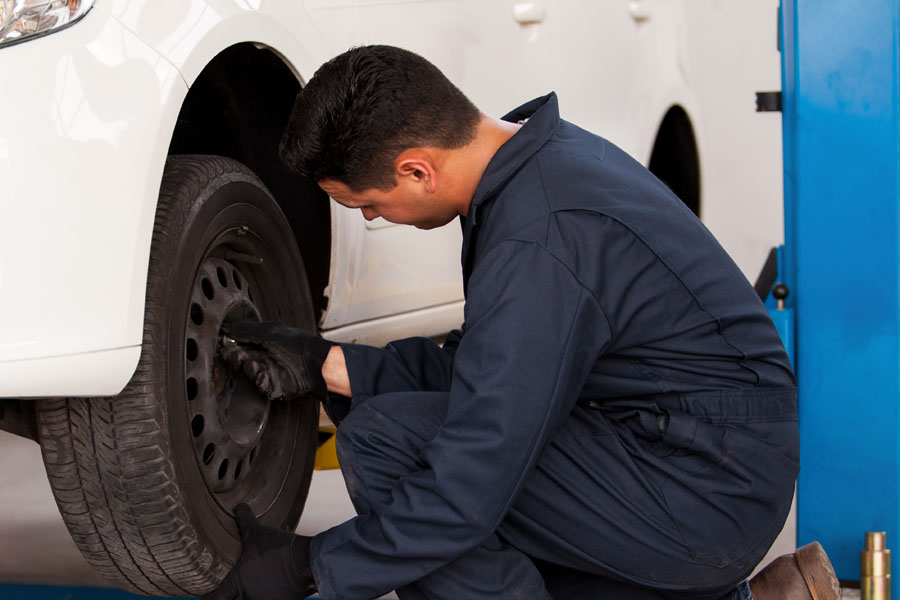How to check your Wheel Hub Assemblies (Wheel Bearings) for Signs of Damage
August 16 2016

Keeping Your Car’s Wheel Hub Assemblies Healthy
Some people said, a car is a collection of thousands of carefully-designed parts that are needed their attention to maintain with. When it comes to your wheel hub assemblies, you definitely need to muster your patience and go the extra mile to make sure they’re in good working condition; these components are vital in keeping your car safe and efficient.
Why Damaged Hubs are Risky
Although modern wheel hub assemblies (also known as wheel bearings) are designed to last as long as your car, they’re subjected to such tremendous strain that hub damage is fairly common. Most drivers will have to deal with a damaged hub assembly at some point in their vehicle’s lifetime.
Damaged wheel hub assemblies may fail catastrophically, causing you to lose control of your vehicle. This is a worst case scenario and few people suffer through it. A damaged assembly still impedes the proper functioning of your car, though! It can increase the wear and tear on other vital components including your brakes and tires. By reducing those parts’ effectiveness, a damaged wheel bearing can compromise your safety while you’re on the road.
Signs of Hub Damage During Normal Driving
There are a lot of different signs you may run into during day-to-day driving that can indicate a problem with one or more hub assembly on your car. Grinding, roaring, knocking, or popping sounds from your wheels can indicate a bad bearing. These can be constant or only noticeable when you turn; they’re usually not audible unless you’re moving faster than 30 MPH.
In the longer term, you need to check your wheel hub assemblies if you notice uneven or abnormal wear on your tires or brake components (rotors, pads, and discs). If you let a professional mechanic handle your tire rotations and brake maintenance, they should perform routine hub assembly checks while they do these tasks. If you like to handle your own maintenance, though, it’s especially important to make sure your bearings are in good working condition.
Here is a list of signs if you have a hub assembly that may need to be replaced:
- Snapping, clicking or popping noises when cornering or making sharp turns
- Grinding noise when the vehicle is moving
- Knocking or clunking sensation from the vehicle
- Wheel vibration and/or wobble
- Poor steering control
- Shudder, shimmy or vibration at a constant speed
- Vehicle pulling to one side, regardless of the breaks being applied
- Uneven rotor or brake pad wear
- Abnormal or uneven tire wear
- ABS operation may be affected or even fail due to damage caused to the wheel speed sensors
- Humming, rumbling or growling. The noise or vibration intensifies when turning the steering wheel slightly to the left or right. In general, the side opposite the noise or vibration is the defective side.
Doing Your Own Hub Assembly Check
Fortunately, a damaged hub assembly is easy to spot once you have your wheels jacked up off the ground. If at all possible, check your wheels two at a time – either both front wheels or both back ones. You can often spot a broken wheel bearing simply by comparing the behavior of two wheels after you spin them at the same time. If one of them shudders, slows down, or grinds to a stop before the other, it likely has a bad bearing.
To check individual wheel hub assemblies, you need to look for “play”. “Play” is any looseness in the wheel’s connection to the axle when it’s fully bolted down. You can check for play by grasping the wheel at its top and bottom, and pushing one side while pulling the other. You shouldn’t be able to wiggle the wheel to any significant degree this way; if you can, then the wheel has a dangerous amount of play.
When you discover a damaged wheel hub assembly, make sure it’s replaced with either OEM parts from your manufacturer or quality aftermarket replacement parts like WJB’s that meet the same standards. Making sure your vehicle is running on healthy wheel hub assemblies is a vital part of keeping your vehicles – and you – safe on the road.

Write A Comment